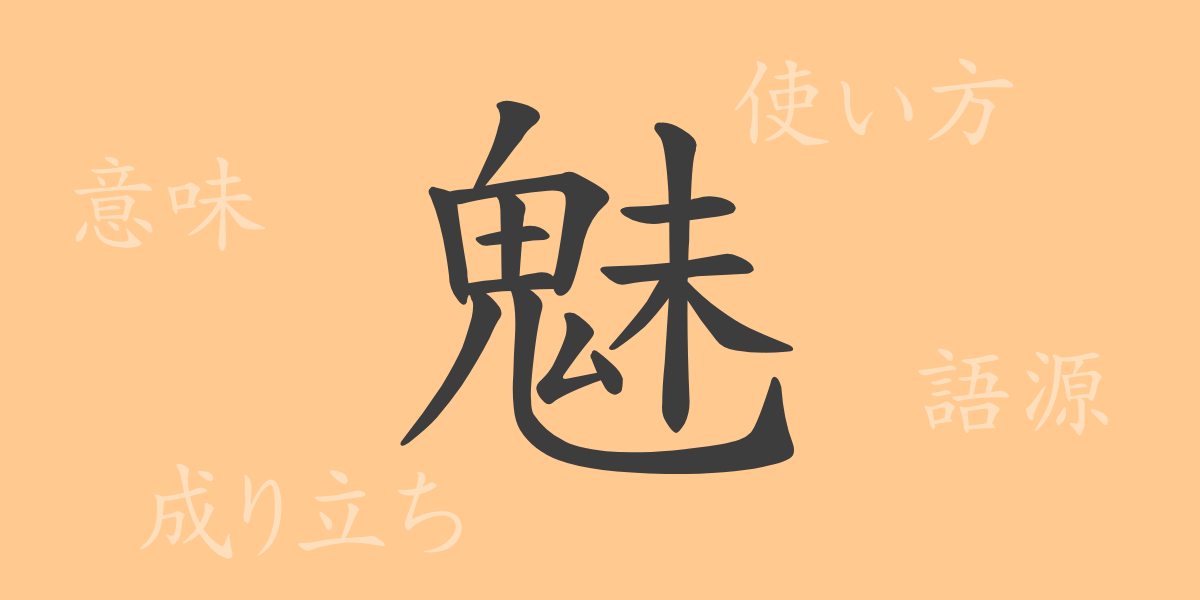Japanese language allows for rich expression through its unique characters, known as 漢字 (kanji). Each kanji character carries deep meanings and history, and understanding them is key to fully appreciating the charm of the Japanese language. This time, we spotlight one of the commonly used kanji characters in Japan, which, true to its name, evokes a sense of “魅力” (miryoku) or “charm.” We will explore its origin, meaning, usage, and related idiomatic expressions.
Origin of 魅 (mi)
The kanji 魅 (mi) originates from ancient Chinese mythology and legends. Initially, it was used to refer to demons or spirits that beguiled people. Therefore, unlike its positive connotation in modern times, in ancient times it referred to a negative, misleading force. However, over time, it came to be used with meanings such as “charming” and “attractive.”
Meaning and Usage of 魅 (mi)
In modern Japanese, the meaning of 魅 (mi) primarily refers to a mysterious power or charm that captivates people’s hearts. It is used in expressions like “魅了する” (miryou suru) meaning “to captivate” and “魅力的な” (miryokuteki na) meaning “attractive.” It is also used metaphorically to praise the unique charm of certain things or people.
Reading, Stroke Count, and Radical of 魅 (mi)
By exploring the reading and structure of the kanji 魅 (mi), we can delve deeper into its allure.
- Reading: In 音読み (onyomi), it is read as “ミ” (mi). There is no specific 訓読み (kunyomi).
- Stroke Count: It has a total of 15 strokes.
- Radical: The radical is 鬼部 (kihen), which is common to kanji related to demons or spirits.
Idiomatic Expressions, Idioms, and Proverbs Using 魅 (mi)
Idiomatic expressions and idioms containing the kanji 魅 (mi) vividly reflect the charm inherent in the character. Here are a few examples:
- 魅力 (miryoku): The power or value that attracts people.
- 魅了 (miryou): To strongly captivate someone’s heart.
- 魅惑 (miwaku): To beguile or the charm that does so.
- 魅入る (miiru): To be captivated by something.
Summary of 魅 (mi)
By observing the evolution of the kanji 魅 (mi) from its origin to the present, we can glimpse how words evolve with time and expand in meaning. Once a symbol of misleading power, it now represents a positive charm that attracts people. Understanding such backgrounds allows us to feel the deep history and cultural weight each kanji carries. In studying Japanese, understanding kanji like 魅 (mi) can be the key to unlocking the rich world behind the words.

























